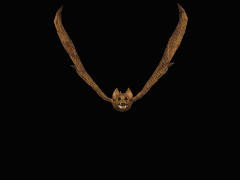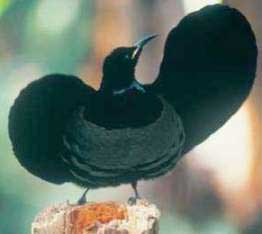


|
Ptilonorhynchidae:
Bowerbirds and catbirds make up the family Ptilonorhynchidae. All are small to medium in size. Although their distribution is centered around the tropical northern part of Australia-New Guinea, some species extend into the central Australian desert and the cold mountainous regions of southeast Australia.
The most notable characteristic of bowerbirds is the extraordinarily complex behaviour of males, which is to build a bower to attract mates. Depending on the species, the bower ranges from a circle of cleared earth with a small pile of twigs in the center to a complex and highly decorated structure of sticks and leaves - usually shaped like a walkway, a small hut or a maytree -, into and around which the male places a variety of objects he has collected. These objects - usually strikingly colored - may include up to hundreds of shells, leaves, flowers, feathers, stones, berries, and even discarded plastic items, pieces of glass or similar things. The bird will spend hours carefully sorting and arranging his collection, with each thing in a specific place. If an object is moved while the bowerbird is away he will put it back in its place. No two bowers are the same, and the collection of objects reflects the personal taste of each bird and its capability to procure unusual and rare items (going as far as stealing them from neighboring bowers). At mating time, the female will go from bower to bower, watching as the male owner conducts an often elaborate mating ritual, and inspecting the quality of the bower. Inevitably, many females will end up selecting the same male, and many underperforming males will be left without mates.
This complex mating behaviour, with highly-valued types and colors decorations varying in attractiveness from year to year like a fashion trend in many species, has led some researchers to regard the bowerbirds as the most advanced of any species of bird. It provides also one of the most compelling evidences that the extended phenotype of a species can play a role in sexual selection and indeed act as a powerful mechanism to shape its evolution, as seems to be the case for humans. In addition, many species of bowerbirds are superb vocal mimics. Macgregor's bowerbird, for example, has been observed imitating pigs, waterfalls, and even human chatter. |
